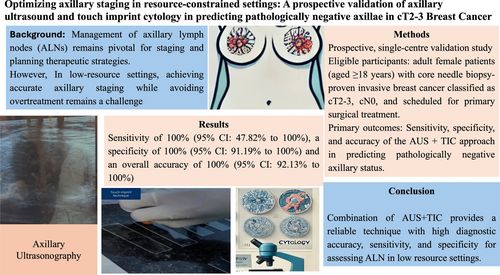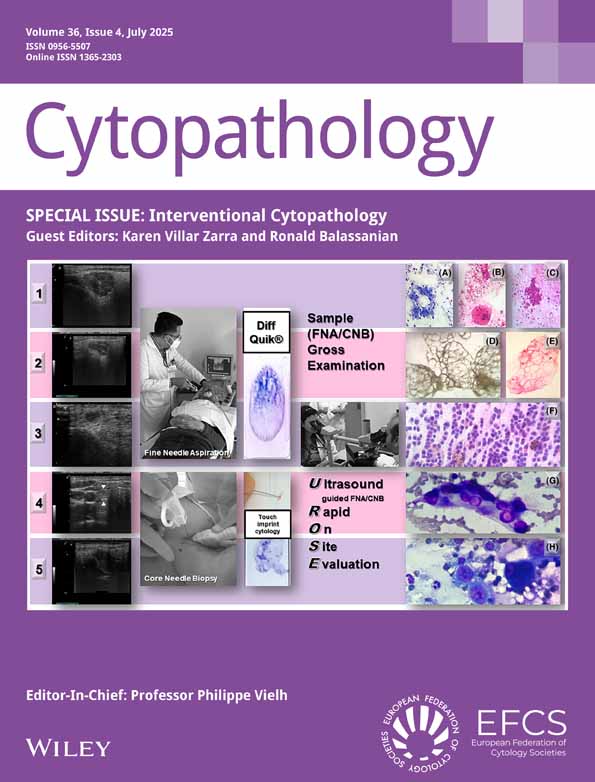Optimising Axillary Staging in Resource-Constrained Settings: A Prospective Validation of Axillary Ultrasound and Touch Imprint Cytology in Predicting Pathologically Negative Axillae in cT2-3 Breast Cancer
Balmik Chaturvedi and Muktesh Khandare have contributed equally and are joint first author.
Nomination for Mina Desai Award: Dr Sanjay K Yadav.
ABSTRACT
Background
Management of axillary lymph nodes (ALNs) in breast cancer patients remains pivotal for staging and planning therapeutic strategies. However, In low-resource settings, achieving accurate axillary staging while avoiding overtreatment remains a challenge as the majority of patients present with advanced stage. In this prospective validation study, we assessed the efficacy of axillary ultrasound (AUS) combined with touch imprint cytology (TIC) for predicting negative axillary status in cT2-3 breast cancer patients.
Methods
This study was a prospective, single-centre validation study conducted in the Breast and Endocrine Unit of the Department of Surgery and the Department of Pathology in a tertiary teaching hospital in central India from September 2022 to April 2024. Eligible participants included adult female patients (aged ≥ 18 years) with core needle biopsy-proven invasive breast cancer classified as cT2-3, cN0, and scheduled for primary surgical treatment. The primary outcomes were the Sensitivity, specificity, positive predictive value (PPV), negative predictive value (NPV) and accuracy of the AUS + TIC approach in predicting pathologically negative axillary status.
Results
AUS + TIC had a sensitivity of 100% (95% CI: 47.82%–100%), a specificity of 100% (95% CI: 91.19%–100%) and an overall accuracy of 100% (95% CI: 92.13%–100%). There were no false negatives.
Conclusion
Our findings suggest that the combination of AUS + TIC provides a reliable technique with high diagnostic accuracy, sensitivity, and specificity for assessing ALN in low resource settings.
Graphical Abstract
Conflicts of Interest
The authors declare no conflicts of interest.
Open Research
Data Availability Statement
The data that support the findings of this study are available from the corresponding author upon reasonable request. No publicly accessible dataset was generated or analysed during this study.





